B.Y.O.R. (Bring Your Own Religion)
Our Lady of Guadalupe, Guatalupe Center, Westside, Westminster Congregational, Metropolitan Spiritual Church, Holy Rosary, Hyde Park, Columbus Park, Akron Plan, Scalabrinian Order, Pilgrim Chapel
Kansas City has a place for everyone. And if it doesn’t, well, we’ll make one.
Each of these diverse centers of worship was built with a mission — to serve a particular community within the city. Or in some cases, all of them.
Pilgrim Chapel, 3801 Gillham Road
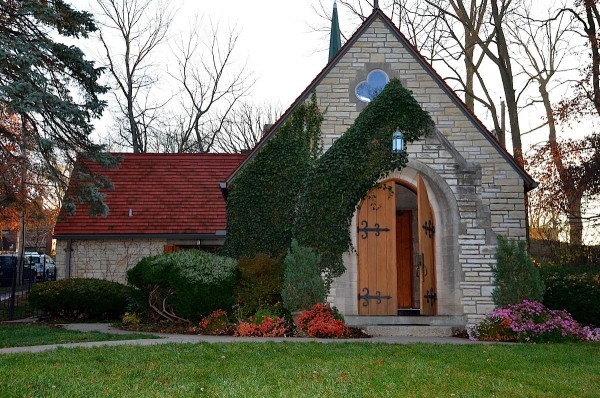
Courtesy of Mingle Kansas City
In Kansas City’s Hyde Park neighborhood, people of all faiths and beliefs can find comfort and a welcoming place to worship under one united roof at the Pilgrim Chapel.
Though initially erected and established as a Lutheran church, the Gothic chapel has always served a non-traditional congregation. The interior, designed by architects Clifton Ramey and F.R. Webber, highlights visibility over audibility; the church was built specifically for those of the Lutheran faith who were deaf or hard of hearing. At least 200 patrons attended the dedication ceremony in 1941, as the Pilgrim Lutheran Church for the Deaf became just the 10th such institution in the United States.
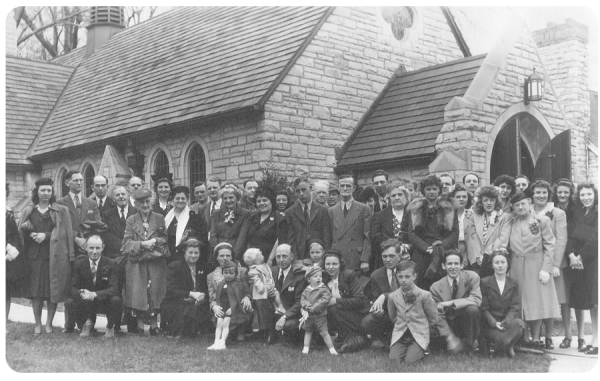
Courtesy of Pilgrim Chapel
The chapel garnered a haunting nickname – “The Church of Silence” – “for the congregation is made up of deaf persons and the hard of hearing and messages are communicated to them by the lip-reading method and by the manual sign language,” the Kansas City Star reported. It remained in use by Kansas City’s deaf community until 1987.
“Today,” writes Executive Director Andrew Johnson, “Pilgrim Chapel is no longer a Lutheran church for the deaf, but we carry on the spirit of providing a sacred space to enter silence and learn how to listen deeply to the needs of the community and world.
We are a multi-faith public chapel that is open daily for meditation and prayer, and also for individuals who don’t belong to a church community but who nonetheless seek a blessing for their marriage, baptism, or memorial service, regardless of their race, gender, sexual orientation, or any other dividing wall that too many church’s have historically upheld.
But it is also still a place to listen deeply for shifts both large and small, both in our local community and our global village.”
Holy Rosary Catholic Church, 911 E Missouri Ave
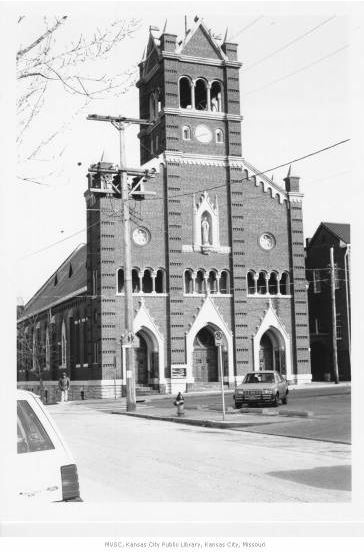
Courtesy of Missouri Valley Special Collections
It’s suiting that Kansas City’s “Little Italy,” officially known as the Columbus Park neighborhood, is home to the Holy Rosary Catholic Church and the service of the Scalabrinian missionaries. Founded in the real Italy by Giovanni Battista Scalabrini in 1877, the goal of the Roman Catholic order was “to maintain Catholic faith and practice among Italian emigrants in the New World.”
In 1891, the mission arrived in Kansas City with the building of Holy Rosary, and a few short years later, the Bishop Scalabrini himself graced the church with his presence and message during a visit to Holy Rosary Catholic church.
Over time, the “Italian” part of the mission faded and grew to include all origins and ethnicities. During the 1980s, Holy Rosary retained a Vietnamese priest to serve that community within the city, until a Vietnamese-dedicated parish was opened and said priest became pastor of the new parish.
The Holy Rosary Church served many notable characters over the years, including Little Italy’s infamous above-the-law Mob Boss Johnny Lazia. In July, 1934, after a gangland slaying that took his life, Lazia’s funeral services were held at the Holy Rosary Church. One of the last things Lazia said on his death bed: “Why me, who has only been good to people?”
Today, in an area dubbed “The Holy Rosary Historic District” by the National Register of Historic Places (roughly Harrison and E. Missouri Avenue to 5th and Campbell Streets), the church from which it takes its name continues to serve Kansas City’s Catholic community, as well as aid for the homeless and refugees.
Westminster Congregational Church, 3600 Walnut Street
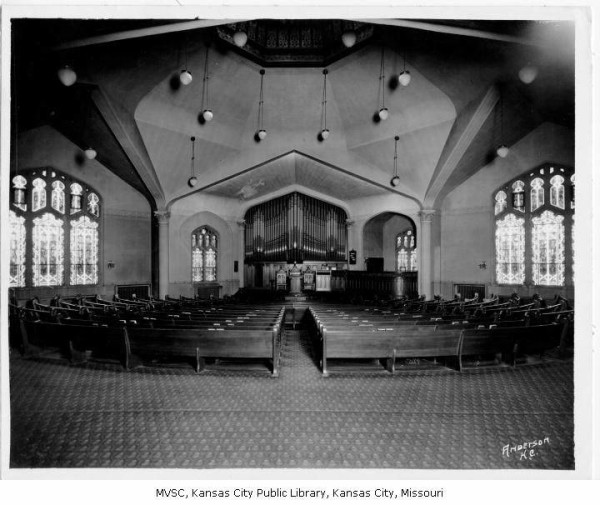
Courtesy of Missouri Valley Special Collections
The old Westminster Presbyterian church sits forgotten and for sale at 36th and Walnut streets, a shadow of its lovely blue limestone self. With ambition and skill the church was erected in 1904 in the “Akron Plan” model, after the Prytania Street Presbyterian church in New Orleans. A long hall finished with a horseshoe-curved gallery featured moveable dividers, creating the option for an entire open floor or several separate Sunday school classrooms.
Though an 1895 conflict within the church (originally called Second Presbyterian church) over the appointment of a new pastor had left the congregation halved, Westminster prevailed. In 1900, church leaders accepted the prestigious invitation into the Kansas City Congregational Union as well as the Kansas City Presbytery, and the little church that could became Westminster Congregational Church.
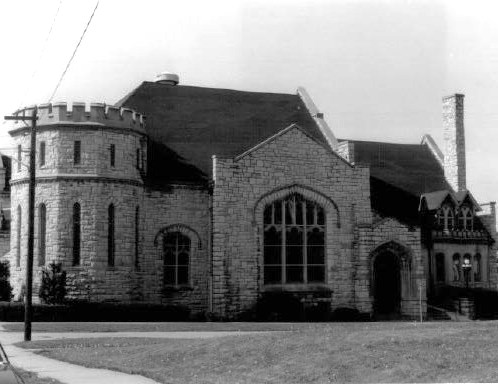
Courtesty of the Missouri Department of National Resources
“Westminster was rated as one of the four outstanding Congregational churches in the state,” reads the form declaring the church a member of the National Register of Historic Places. Perhaps – with hope – someday soon we will see Westminster rise again.
Metropolitan Spiritual Churches of Christ, 1231 Garfield Ave

Courtesy of the Metropolitcan Spiritual Church of Christ
The Reverends William Taylor and Leviticus Boswell first met in Chicago as members of the Metropolitan Community Church. When they moved to Kansas City and launched the Metropolitan Spiritual Church of Christ, consisting of nine members in Mother Cora Murray’s Kansas City home, the two men commenced the Spiritualist movement in the United States in earnest.
The first Spiritualist church was conceived by Leafy Anderson, a black leader and a symbol of African American religion in the United States.
From the nine in 1925, the Kansas City congregation expanded and strengthened so quickly that two moves were required and a waiting list accumulated for choir participation. After a stint at 1834 E. 9th Street (once headquarters for the fraternal African-American order the Knights and Daughters of Tabor Hall), church leaders acquired the building at 1231 Garfield Avenue.
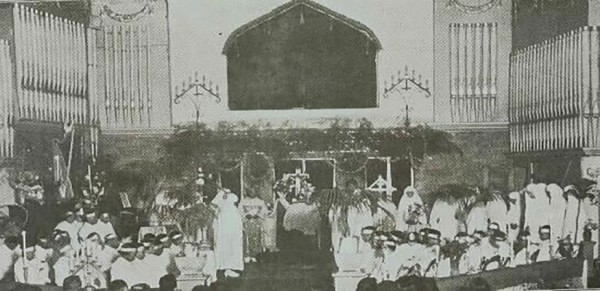
Courtesy of Metropolitan Spirtual Church of Christ
Even with such a membership, funds were hard to come by. Leaders implemented a B.Y.O.B. (bring your own bible) policy and relied heavily on volunteers to help build up the new church. Kansas City Metropolitan Spiritual is modeled after the temple in Jerusalem, save for the 18-foot high ceilings and full bathtub adorning the choir room. A cleanliness-is-next-to-Godliness policy was also strictly followed.
“Pray as You Enter,” reads an inscription at the church entrance, for as the Spiritualist motto goes, Jesus is the light of the world. The church is well and good as it remains a pillar in Kansas City’s black community.
Our Lady of Guadalupe Parish 901 Cesar Chavez Avenue/ 2544 Madison
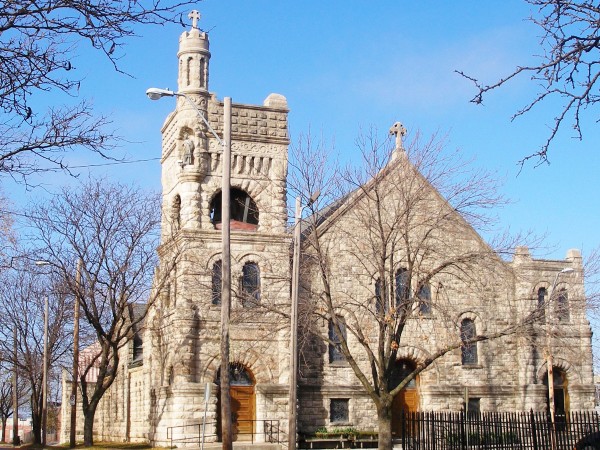
Courtesy of Sacred Heart & Our Lady of Guadalupe
Guadalupe: the patron saint of Mexico, and the savior of Kansas City’s Westside Latino community. Countless immigrants seeking work or respite from the Mexican Revolution settled in Kansas City, and quickly faced discrimination and refusal of service from schools, hospitals, churches and similar institutions.
In 1914, in the name of the patron saint, Our Lady of Guadalupe congregation had humble beginnings in a house-turned-makeshift chapel. A parish arose, standing tall and proud and welcoming on Cesar Chavez Avenue in the Westside, and not long after, the Guadalupe Center opened within. As of 1922, Our Lady of Guadalupe parish offered worship services to the immigrants alongside English lessons, healthcare and aid in job-finding.
The parish operated as a barrio – meaning “a community with strong social and economic ties,” according to the Kansas City Public Library. This dedication was embodied by one Dorothy Gallagher, an inspiration and a saint herself. She volunteered at the Guadalupe Center until 1944, garnering the nickname “Godmother of Guadalupe.”
Decades later, Our Lady of Guadalupe still offers worship services, though it merged with Sacred Heart in 1991 and is now located nearby at 25th and Madison. The original parish remains a shrine, and the Guadalupe Center is the oldest running Hispanic organization in the United States.










